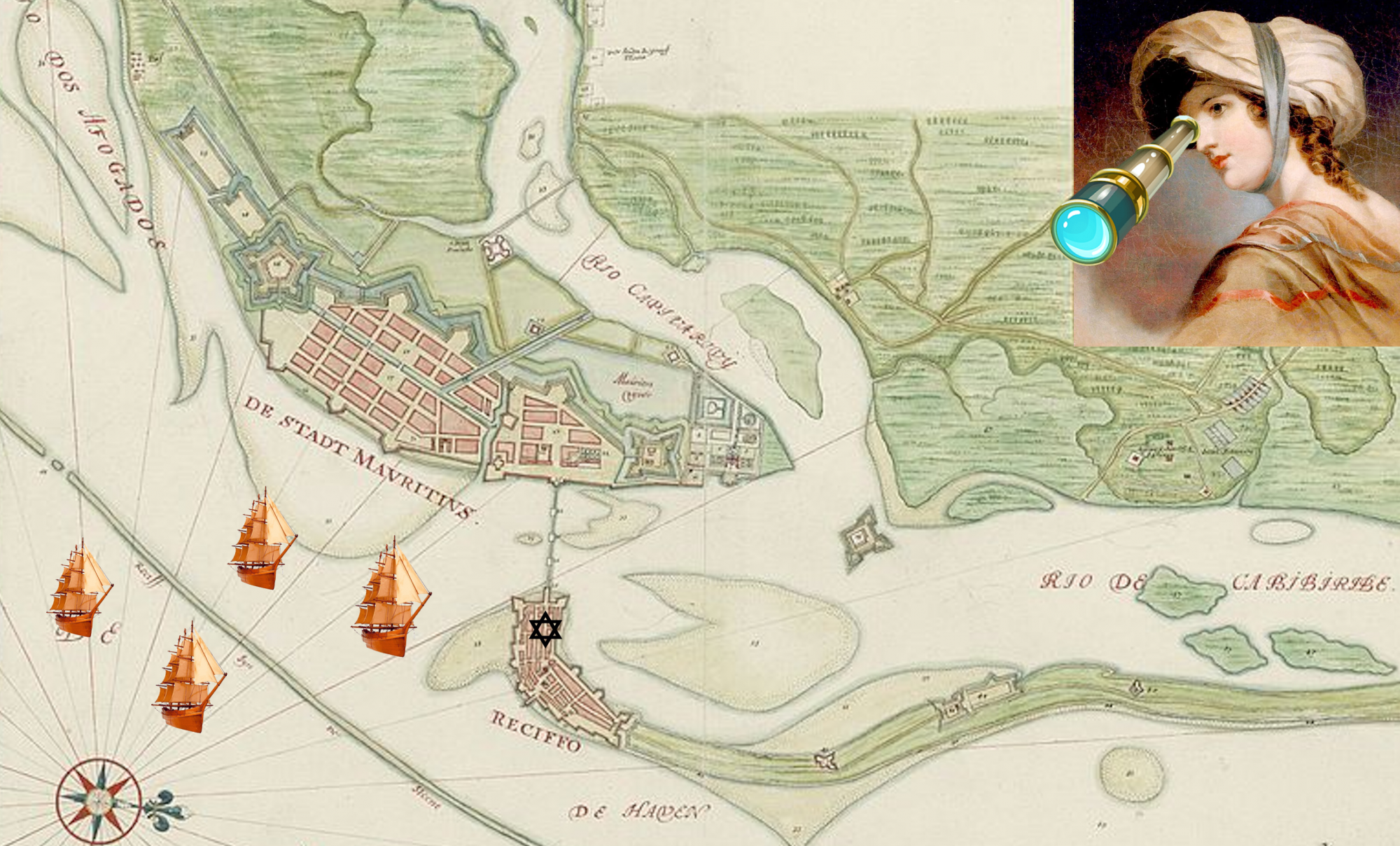
Although some Jews came to the Americas directly from Iberia, many escaped first to Protestant countries that were more welcoming of Jews. The most important of these was the Netherlands (1581-present), particularly its crown jewel, Amsterdam. Even those who didn’t come through the Netherlands had trade or family connections with Amsterdam, and its vibrant Jewish community would provide the Rabbis and influence the religious life of almost all openly Jewish settlements in the colonies.

Sephardim and the Netherlands had both a common genealogy and a common enemy: they had both once belonged to Iberia. In 1566 William of Orange, a Calvinist, started the eighty years war against Spain to liberate the Dutch Low Countries (later the Netherlands) from the Catholics. When the Dutch declared independence in 1581 the also promised religious peace. Soon many Jews were settling in the United Netherlands, particularly Amsterdam, a sheltered port on two “S” shaped artificial lakes, the Markermeer and the IJsselmeer, that connect to the North Sea.
Although denied the right to work in many trades, Jews flourished as merchants in Amsterdam and soon set up synagogues and yeshivot where children were trained in Hebrew and Talmud, but also in Spanish. Despite their problems in Iberia, the Sephardim remained proud of their Iberian heritage. Since most were descendants of the Jews forced to convert in Portugal, Amsterdam Sephardim spoke Portuguese around the house and wrote their synagogue records and sermons in Portuguese. Spanish was used for translations of the Torah and writing beautiful poems.

Although some members of the Amsterdam community eventually settled in London and Hamburg, Amsterdam had the greatest influence on the religious life of Jews in the colonies. The new congregations in the Americas would be named after books written by Amsterdam’s Rabbi’s (Mikveh Israel) or the yeshivot and Jewish aid societies in Amsterdam (Jonen Dalim, Sahare Sedek). Indeed up through the eighteenth century, many of the rabbis in the colonies were either born or trained in Amsterdam. One of the greatest early rabbis to travel from Amsterdam to the colonies was Rabbi Isaac Aboab da Fonseca, an important kabbalist, who became the leader of the Jewish community of Recife.
The art of the Amsterdam Jewish community also had a large influence on the colonies. Most colonial synagogue mimicked either the beautiful Esnoga (Portuguese Synagogue) built in Amsterdam in 1675-76, or London’s Bevis Marks, itself based on the Amsterdam Esnoga.

Likewise the beautiful and distinctive style of gravestones found in the Portuguese Cemetery or Beth Haim (“House of Life”) were imported to the colonies and also widely imitated there by local artists.

Yet, not everyone in Amsterdam was Sephardic. Because of the community’s great wealth, a larger number of Ashkenazi refugees came to the city to flee pogroms in Eastern Europe, particularly the Khmelnytsky Uprising (1648-57) in the Ukraine in which as many as 100,000 Ashkenazi Jews lost their lives, and thousands other fled for safety. Some of these Ashkenazi refugees stayed in Amsterdam only briefly before journeying on to the colonies. In order to help impoverished Jews make the voyage, the Amsterdam community supplied funds to pay their way. Other Ashkenazim, however, stayed in Amsterdam and built beautiful synagogues of their own. In time, their would be more Ashkenazi Jews in the city than Sephardim.

